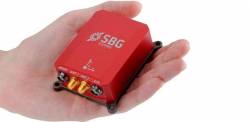The radionavigation satellite service (RNSS) portion of the RF spectrum is overcrowded, especially on L1 where GPS, Galileo, Compass overlap portions of one another’s signal frequencies and GLONASS signals occupy more than 11 MHz of nearby bandwidth. Indeed, even those bands that have not been used so far will certainly be shared by many systems in the near future. Therefore, the search of alternative frequency resources is something that must inevitably occur with a high probability in the coming years.
The radionavigation satellite service (RNSS) portion of the RF spectrum is overcrowded, especially on L1 where GPS, Galileo, Compass overlap portions of one another’s signal frequencies and GLONASS signals occupy more than 11 MHz of nearby bandwidth. Indeed, even those bands that have not been used so far will certainly be shared by many systems in the near future. Therefore, the search of alternative frequency resources is something that must inevitably occur with a high probability in the coming years.
During the World Radio Conference 2000 (WRC-2000), the Galileo program obtained authorization to use C-band frequencies. At the time, a dedicated portion of the C-band had been assigned for radionavigation, but technical complexities made it impossible for the first generation of Galileo to make use of it. Phase noise problems, increased signal transmit power requirements, and signal attenuation issues — to name only a few — knocked down all the proposed solutions. We will refer to these aspects in detail in the following discussion.
As happens with any kind of technology, however, many ideas that have been abandoned in the past due to excessive technical challenges or demanding drawbacks often become objects of interest some years or decades later. As technology evolves, constraints alter, and the environment of possibilities changes.
Against this background, the question emerges as to whether the use of C-band frequencies could represent a real alternative for a future GNSS. In this column, we will try to shed some light on this interesting possibility. Before that, let us first look at what we understand about C-band and how the regulatory RF spectrum situation affecting its use varies in different countries.
(For the rest of this story, please download the complete article using the PDF link above.)




